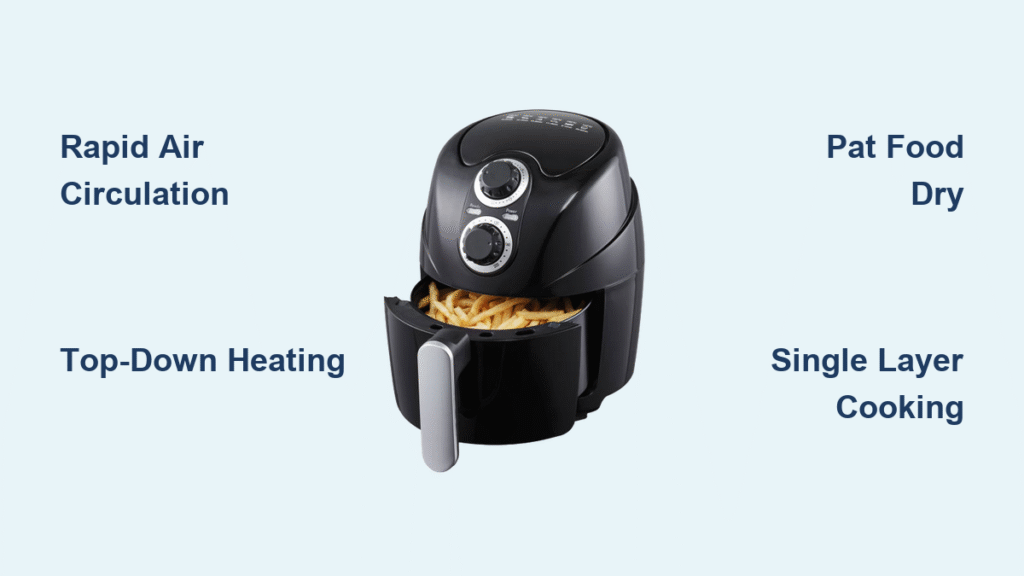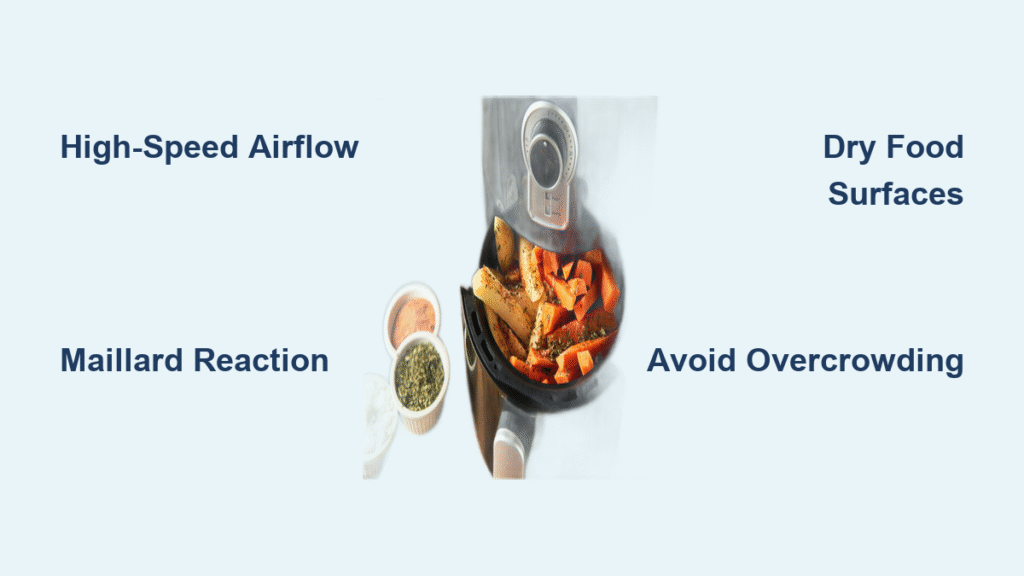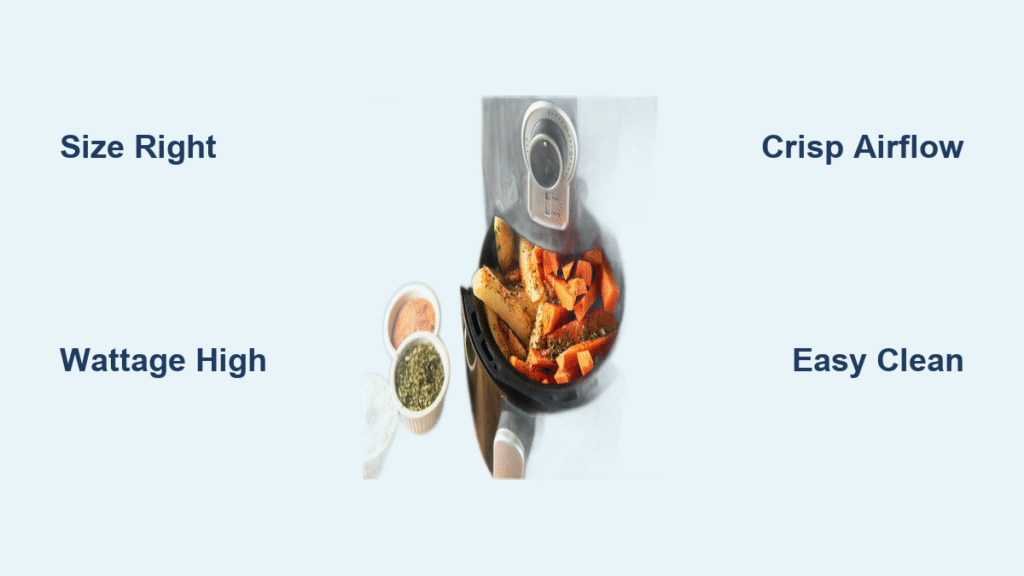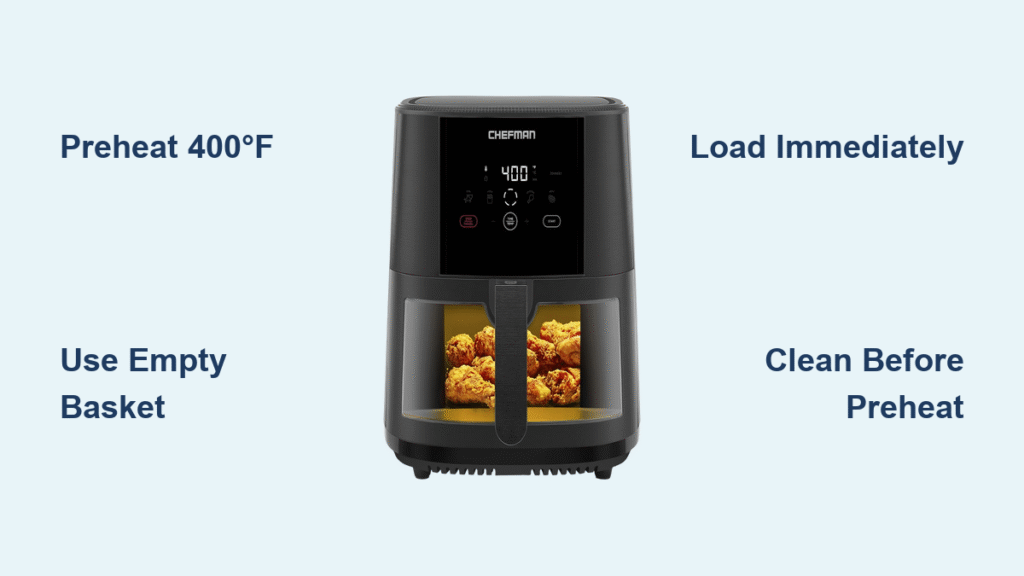You’ve probably wondered how an air fryer works when you pull out perfectly crispy fries with just a tablespoon of oil. The truth is, air fryers don’t actually fry food at all—they’re sophisticated countertop convection ovens engineered to deliver fried-like results through precision heat and airflow. Understanding how your air fryer works transforms you from a casual user into a kitchen master who consistently achieves golden-brown perfection without the oil bath.
The magic happens through a powerful combination of intense radiant heat and hurricane-force air circulation working in perfect harmony. This isn’t just marketing hype—it’s applied physics that creates the Maillard reaction (that delicious browning process) faster than conventional cooking methods. By the time you finish this guide, you’ll know exactly what’s happening inside your appliance and how to leverage that knowledge for better results every time.
Why Your Air Fryer Creates Crispy Results with Minimal Oil
Your air fryer achieves that coveted crunch through a dual-action heating system that outperforms standard ovens. Unlike traditional cooking methods, it combines top-down infrared radiation with 360-degree rapid air circulation to create what manufacturers call Rapid Air Technology.
The Science Behind the Crispiness
Here’s exactly what happens when you press start:
– Radiant Heat Blast: A powerful 1500-1800 watt heating element positioned directly above your food emits intense infrared radiation at 350°F-400°F
– Air Circulation Hurricane: A high-speed fan propels this super-heated air downward and around your food at velocities significantly faster than conventional convection ovens
– Maillard Reaction Acceleration: This intense heat transfer triggers browning reactions 2-3 times faster than standard baking methods
Compact Chamber Physics Explained
The small size of your air fryer isn’t just for countertop convenience—it’s critical to the technology. This concentrated space creates:
– Faster preheating (2-3 minutes vs. 10-15 for conventional ovens)
– More efficient heat transfer due to reduced air volume
– Eliminated cold spots through consistent air movement
– Reduced energy consumption (up to 50% less than full-size ovens)
Critical Components That Make Your Air Fryer Function

Understanding your appliance’s anatomy helps you use it more effectively and troubleshoot issues before they become problems.
The 5 Essential Parts Inside Your Air Fryer
- Top-Mounted Heating Element: Generates intense infrared radiation that initiates surface browning
- High-Velocity Fan System: Creates the rapid air circulation that defines air frying technology
- Perforated Cooking Basket: Engineered with strategic venting channels for 360-degree air exposure
- Drip Tray: Collects excess fat and prevents smoking during cooking
- Precision Temperature Control: Maintains exact temperatures between 175°F-400°F
Standalone vs. Multi-Function Models: Which Works Better?
Compact Standalone Units (egg-shaped) deliver maximum air frying performance with:
– Superior air circulation patterns
– Faster heat-up times
– Simpler operation for single-task cooking
Countertop Oven Models offer versatility with trade-offs:
– Additional functions (baking, dehydrating, proofing)
– Slightly reduced air circulation intensity
– Larger capacity but longer preheating times
Air Fryer vs Deep Fryer: What Actually Happens to Your Food

The fundamental difference isn’t just about oil quantity—it’s about how heat transfers to your food.
The Oil Absorption Reality Check
| Cooking Method | Oil Used | Fat Absorption | Calorie Difference |
|---|---|---|---|
| Air Fryer | 0-2 tablespoons | Minimal surface coating | 14-90 fewer calories per serving |
| Deep Fryer | 3-6 cups | Full submersion absorption | Standard fried food calories |
Texture Science: Why Results Aren’t Identical
While air fryers create remarkable crispiness, they can’t perfectly replicate deep-fried texture because:
– No oil penetration: Crispiness stays primarily on the surface
– Moisture retention: Food maintains more internal moisture
– Batter limitations: Wet batters drip through perforations
Pro Tip: For best results with breaded items, use dry coatings like panko and avoid wet batters that create mess without proper adhesion.
Foods That Actually Work in Your Air Fryer (and Which Don’t)

Not all foods respond equally to air frying technology—understanding why saves you time and frustration.
Top Performers That Shine in Air Fryers
Proteins that crisp perfectly:
– Chicken wings (pat dry first for maximum crisp)
– Salmon fillets (skin becomes delightfully crispy)
– Shrimp (cooks in just 6-8 minutes)
– Tofu cubes (develops excellent texture with light oil)
Vegetables that transform:
– Brussels sprouts (develop caramelized edges)
– Sweet potato fries (stay crispy without sogginess)
– Cauliflower steaks (maintain structure while browning)
Preparation Secrets for Success
- Dry thoroughly: Moisture creates steam instead of crisp (pat proteins with paper towels)
- Oil sparingly: ½ teaspoon per serving enhances browning without adding significant calories
- Size consistently: Uniform pieces ensure even air exposure
- Single layer placement: Prevents steaming and promotes proper crisping
Foods That Disappoint in Air Fryers
Avoid these common air frying mistakes:
– Wet batters (they drip through basket perforations)
– Delicate greens (spinach and lettuce blow around)
– Cheese alone (melts through basket holes)
– Large roasts (overcrowd the chamber, preventing proper air circulation)
Troubleshooting Common Air Fryer Problems
Understanding the technology helps you solve issues before they ruin your meal.
Why Your Food Comes Out Soggy
Cause: Excess moisture or inadequate air circulation
Solution: Pat food dry thoroughly and reduce batch size by 25% to improve airflow
Uneven Browning Fixes
Cause: Overcrowding or improper basket placement
Solution: Shake basket halfway through cooking and leave ½ inch between food items
Smoke Production Solutions
Cause: Excess fat dripping onto heating element
Solution: Clean drip tray before cooking and trim visible fat from meats
Maintenance Secrets for Long-Lasting Performance
Proper care ensures your air fryer continues delivering perfect results for years.
Daily Cleaning Protocol
- After each use: Remove basket and tray while still warm (but not hot)
- Soak stubborn residue: Use warm, soapy water for stuck-on food
- Wipe interior: Clean chamber walls with damp cloth once cooled
- Dry thoroughly: Prevent moisture buildup before storage
Monthly Deep Cleaning Checklist
- Remove all basket components and soak in warm, soapy water
- Use soft brush to clean fan area (power off and completely cool)
- Check all perforations for blockages with toothpick
- Wipe heating element gently with slightly damp cloth
Maximizing Your Air Fryer’s Potential: Pro Tips
You’re now equipped with the knowledge to transform your air frying results from good to exceptional.
Reheating Leftovers Like a Pro
Your air fryer excels at restoring crispiness to previously fried foods in just 3-4 minutes. This beats microwaves (which create sogginess) and conventional ovens (which take much longer). Simply place leftovers in the basket at 350°F for 3-4 minutes—pizza crusts regain crunch, fried chicken stays crispy, and roasted vegetables maintain their caramelization.
Multi-Function Mastery
If you own a countertop oven model, leverage these advanced capabilities:
– Dehydrate: Make fruit leather at 135°F for 6-8 hours
– Proof bread: Maintain 80-85°F for perfect dough rising
– Bake small batches: Cookies and muffins cook in half the time
Final Performance Insights
Your air fryer works because concentrated heat and precise air control create textures previously achievable only through oil submersion. The key to mastery lies in understanding that it’s not magic—it’s applied physics. By leveraging the rapid air circulation and intense radiant heat properly, you can achieve restaurant-quality results with minimal effort and significantly reduced oil usage.
Remember these critical success factors: always pat food dry before cooking, respect the single-layer cooking principle, and understand your specific model’s quirks. When used correctly, your air fryer becomes the most versatile appliance in your kitchen, delivering crispy perfection without the oil bath. As technology continues evolving with improved circulation patterns and smart controls, the fundamental principle remains unchanged—super-heated air circulation creates golden-brown results through science, not sorcery.





